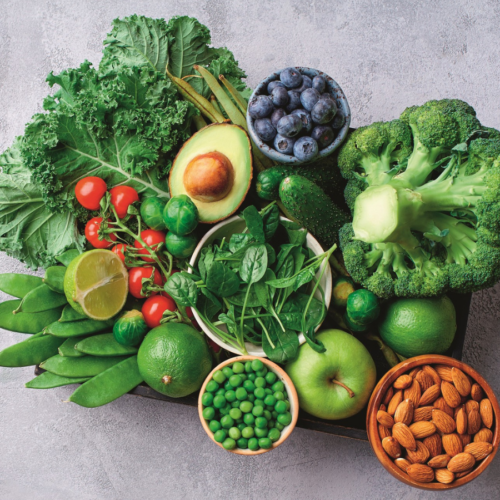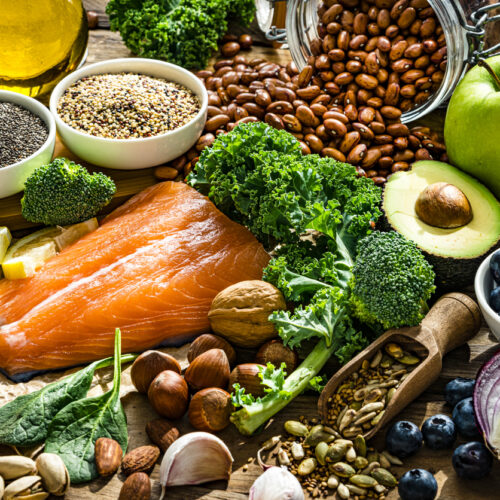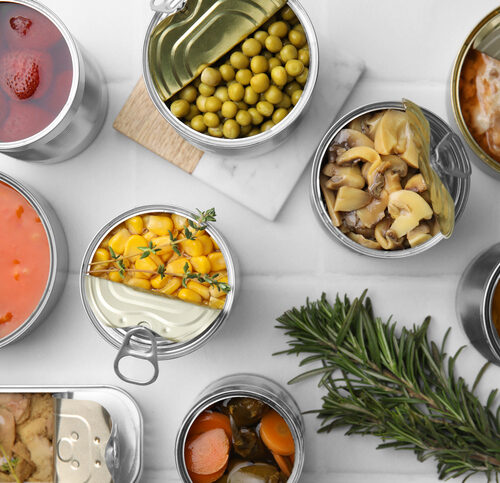
Manufacturers are always working on improving their products, making food healthier, more convenient, quicker, with longer shelf lives. What are we likely to be eating in the future?
Growing better food
Vegetables are good for us but researchers in New Zealand want to make some of our key vegetables even healthier. For example, Crop & Food Research is working towards developing potatoes with a lower glycaemic index and more fibre. Onions are a source of cancer-fighting flavonoids, so researchers want to find out how to produce onions with even more flavonoids. They’re also looking at how to make peas sweeter and with more fibre and essential minerals. HortResearch has an extensive programme looking at new and more nutritious varieties of pears and apples. New Zealand is renowned for apple innovation. Apple varieties bred and selected here after the 1950s now account for 12% of the world’s apple crop.
Expect to see unusual fruit and vegetable colours in supermarkets of the future – proof of enhanced health-giving properties:
- purple tomatoes
- red kiwifruit
- non-allergenic peanuts
- purple-skinned gourmet potatoes and other potatoes with coloured flesh
- kumara of different colours, shapes and sizes
- broccoli even richer in its cancer-fighting properties
- red-fleshed apples
Beauty food
In Europe, French manufacturer Danone promotes their Essensis yoghurt as a beauty product. No, you don’t slop it over your face before you go to bed at night – you eat it. According to advertisements, their unique formula of nutrients will nourish your skin from within. In fact, Danone claim if you eat two pottles a day for six weeks, it will improve the health of your skin. Not without controversy, the product will reportedly be changed to increase the amount of active ingredients, so one pottle a day will be enough, and repositioned to target mature women for whom the ingredients are thought to be more useful.
Small changes: Reformulating foods for the better
Food manufacturers are always working on improving their products, often with positive health benefits. There have been many small changes to processed foods which we probably haven’t noticed.
In 2004, organisations in the food industry signed an accord with the New Zealand government formally recognising obesity as a major public health risk and supporting the government’s plan to fight obesity. The goal is to reduce obesity and improve nutrition.
Food manufacturers have been removing sugar, fat and salt (sodium chloride), and increasing fibre in a wide range of everyday foods. Examples include:
- the removal of added sugar from Anlene plain yoghurt less salt in King Traditional soups
- reformulated Kellogg’s Muesli Bars to reduce sugar and increase whole grains (and fibre)
- less saturated fat in Maggi 2-Minute Noodles
- less sodium in Sanitarium Skippy Cornflakes.
A good example of a small change which can make a big difference is reducing salt in processed foods. Salt enhances flavour and has an impact on the texture and shelf life of foods. As a nation, however, we eat twice as much salt as recommended. Most of the salt we eat is from processed foods, and while we would revolt if all salt was removed from food, we don’t really notice small reductions.
The New Zealand Heart Foundation has worked with bread manufacturers to reduce the amount of sodium in white bread. We get 25-30% of our daily sodium from bread. By the end of 2009, up to 150 tonnes of salt will have been removed from the bread supply. This means 95% of breads on the market will meet the New Zealand Heart Foundation’s target of 450mg or less sodium per 100g. On average, New Zealanders consume 3.5g sodium per day while the suggested target by the Ministry of Health is 1.6g sodium per day, so this change will have a positive impact on our health.
Changes we think will happen in future:
- Less sodium in processed meats and breakfast cereals. The Heart Foundation already has these in their sights.
Less added sugars in snack/muesli bars. We say add fruit for natural sugars (and the extra fibre) and reduce the added sugar. - We predict future labelling regulations (well underway) will encourage even better formulations with less sodium, saturated fat and added sugars, and more fibre.
- Manufacturers will be motivated to use more fruits, vegetables, legumes and whole grains.
Making healthy food better: Fortifying food
Adding nutrients to food to enhance our health is nothing new: iodine was first added to our table salt in 1924 to stop goitre, a thyroid disease. Adding iodine is a public health issue. As a population, we are susceptible to iodine deficiency and associated diseases.
Other fortification, like the addition of vitamin C to rehydrated juice, is about adding back nutrients which have been lost in processing. Some fortification is about providing the nutrients available in foods they may be replacing. For example, soy milk with added calcium may be used instead of cows’ milk which naturally has high levels of calcium. The latest trends in fortification focus on improving health.
- Bread: From September 2009, bread in New Zealand is required to be fortified with folic acid, to increase the folate intake of women and reduce the number of pregnancies affected by neural tube defects. Because we are eating less iodised salt these days, our intakes of iodine have fallen well below recommended levels. This is exacerbated by increased use of sea salt, rock salt and flaky salt without added iodine. To address our low iodine levels, bread will be produced using iodised salt.
- Plant sterols: Plant sterols have been shown to help lower cholesterol levels. In our supermarkets, the only products currently with added plant sterols are spreads, but in the future we may see breakfast cereals, milk and yoghurt with added plant sterols. These are all now permitted under the Food Standards Code.
Products we could see in future:
- Dairy products with added fibre. Good for digestion and for increasing satiety (feeling full), which is helpful with weight-loss.
- Seasonal products with added vitamin D – like a hearty winter soup – to help keep our vitamins levels up over winter.
- More products with added omega-3. Might be found in anything from breakfast cereals to fruit juice, baked beans, ice cream and salad dressings.
- Antioxidants like zeaxanthin (good for eye health), lycopene (to help fight prostate cancer) and lutein might find their way into cereals and dairy products.
Probiotic to reduce eczema
A probiotic, or ‘good bacteria’, isolated and tested by Fonterra can reduce the occurrence of eczema in young children by almost 5%. A two-year trial of a strain of the probiotic Lactobacillus rhamnosus (DR20™) conducted by the University of Otago’s Wellington School of Medicine and Auckland University also showed that by age two, infants who had been given DR20™, but who contracted eczema, had less severe symptoms than children who had not taken DR20™. Fonterra Ingredients now aims to commercialise the probiotic.
Worldwide, 15-20% of children are affected by eczema, with rates continuing to increase. The reason for the increase in eczema prevalence is not clear, although it may be due to the decrease in exposure to environmental micro-organisms (the so-called ‘hygiene hypothesis’).
www.healthyfood.com










